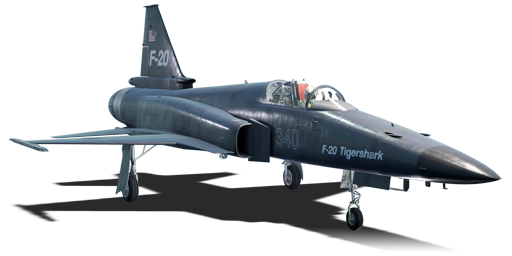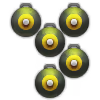


Due to export restrictions by the Department of Defence preventing sales of advanced avionics and aircraft to export customers, many allies who were flying the now out-dated F-5 could not purchase the latest F-16 aircraft to meet the threat of the latest MiG-29s and Su-27s that Soviet allies were receiving. As a result, Northrop Grumman initiated the FX program, to design and build a new 4th light export generation fighter on the basis of the cancelled F-5F Super Tiger. The primary requirements for this new fighter were cheap interoperability with existing F-5 fleets, BVR capability, and modular compatibility with almost every kind of ordnance the US offered for export at the time. The resulting aircraft, the F-20 Tigershark, was essentially an F-5E with a special radar capable of firing the AIM-7 Sparrow missile, and the two small engines of the F-5 family being replaced with a single F-404 engine similar to that of the F/A-18 Hornet. The resulting aircraft was slated to become the export standard for most NATO allies of the time, with Japan, West Germany, Saudi Arabia, Taiwan, and various other close allies eyeing the Tigershark for potential purchase. However, under the Reagan Administration, new export laws were passed which lifted most of the technology export bans, and as a result of further political meddling from the US and General Dynamics, the F-20 saw all its sale chances falter and fall through, with almost every country instead buying F-16s or F-15s (or in the case of Germany, simply upgrading their existing F-4F fleet to carry the new AIM-120 AMRAAM).
The F-20A was introduced in Update "Alpha Strike". Being essentially an up-engined F-5E with better avionics, it plays exactly as one would expect it. It is one of the better dogfighters of its battle rating, as a result, players looking for buying this aircraft should be expected to know how to properly dogfight, manage their energy, and employ their radar correctly to best the enemy aircraft. The incredible choice of ground ordnance also provides a nice alternative to the F-16A Block 10 in mixed battles. All in all, the F-20 is a great premium for researching the ranks of the US tree, and in terms of gameplay acts as a nice in-between for the two F-16s at the same BR in the American tree, having the AIM-7s and BVR capability of the F-16A ADF, while also having the guided ground ordnance of the F-16A Block 10.
flaps
flaps
flaps
brake
| Belt | Belt filling | Armor penetration (mm) at a distance: | |||||
|---|---|---|---|---|---|---|---|
| 10 m | 100 m | 500 m | 1000 m | 1500 m | 2000 m | ||
| HEF-I/HEF-I/API-T/AP-I | 39 | 35 | 22 | 12 | 7 | 4 | |
| HEF-I/API-T/AP-I | 39 | 35 | 22 | 12 | 7 | 4 | |
| HEF-I/HEF-I/HEF-I/API-T/AP-I | 39 | 35 | 22 | 12 | 7 | 4 | |
| API-T/AP-I/AP-I | 39 | 35 | 22 | 12 | 7 | 4 | |
| HEF-I/HEF-I/HEF-I/AP-I | 39 | 35 | 22 | 12 | 7 | 4 | |
| Name | Weight | Slot | ||||||
|---|---|---|---|---|---|---|---|---|
| 84.5 kg |  |  |  |  | ||||
| 2 × | 168.9 kg |  |  | |||||
| 231.3 kg |  |  | ||||||
| 240.9 kg |  |  |  |  |  | |||
| 254 kg |  |  |  |  |  | |||
| 362.4 kg |  |  |  |  |  | |||
| 401.4 kg |  |  |  |  |  | |||
| 19 × | 233.7 kg |  |  |  |  | |||
| 210.5 kg |  |  |  |  | ||||
| 446.8 kg |  |  |  | |||||
| Drop tank (150 gal.) | 80 kg |  |  |  | ||||
| 5 × | 1,204.5 kg |  | ||||||
| 5 × | 1,270 kg |  | ||||||
| 893.6 kg |  | |||||||
| 893.6 kg |  | |||||||
| 766.6 kg |  | |||||||







 2 x (95 / 315 / 495) %
2 x (95 / 315 / 495) % 
 2 x 250 %
2 x 250 % 

Flight performance |
|---|
Survivability |
|---|
Weaponry | |||
|---|---|---|---|